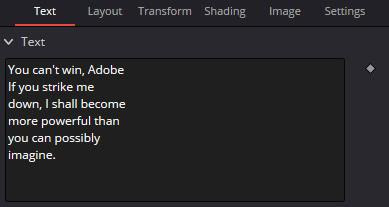DaVinci Resolve 19's public beta has ignited excitement among visual effects artists with its substantial upgrades to Fusion. This powerful combination of color correction, editing, and visual effects tools is rapidly evolving into an end-to-end solution for high-end productions. Let's delve deeper into the key enhancements that are reshaping the VFX landscape.Color Management: A Cornerstone of Precision
One of the most significant advancements in Fusion 19 is the integration of full color management. This long-awaited feature ensures that the colors you see in the edit and color pages are accurately represented in Fusion. While DaVinci Resolve color management delivers exceptional results, there's still room for improvement in ACES support. However, the foundation for precise color workflows is now firmly established.
For those deeply entrenched in professional VFX pipelines, the updated OCIO toolset, supporting OCIO 2.3 and ICC color profiles, offers a robust color management framework. This empowers artists to maintain color accuracy throughout their production process.Referenced Fusion Compositions: A Double-Edged Sword
The concept of referenced Fusion compositions is intriguing, offering the potential to streamline workflow by creating reusable elements. While ideal for simple overlays or effects that require consistent application across multiple shots, its utility for complex VFX work remains to be fully explored.
The ability to modify a master composition and have changes reflected everywhere it's used is undoubtedly powerful. However, for VFX tasks demanding granular control and customization, the current implementation might fall short. A more flexible system, akin to shared notes in the color page or instancing in Fusion itself, would offer greater versatility.DaVinci Resolve Render OFX Plugin: Bridging the Gap
The introduction of the DaVinci Resolve Render OFX plugin is a game-changer for artists working in other VFX software. By enabling the rendering of color page stills within these applications, it fosters a more integrated and efficient workflow.
This plugin is particularly valuable for transferring complex looks and effects, such as those created with animated power windows, which were previously challenging to replicate using LUTs or CDLs. While requiring a Studio license on the same workstation, the benefits in terms of look development and consistency are substantial.Enhanced Text Plus Tools: Precision and Flexibility
Motion graphics artists will appreciate the refinements made to the Text Plus tools. On-screen controls now accessible from the edit page and improved character, word, and line-based transforms offer greater precision and control. The ability to animate character and word-level offsets opens up new creative possibilities.Universal Scene Description (USD): Paving the Way for 3D
Fusion's growing USD support is a testament to Blackmagic Design's commitment to transforming Fusion into a full-fledged 3D compositing environment. The ability to import volumetric data and create custom shaders brings Fusion closer to industry standards.
While USD is still developing, the progress made is promising. As it matures, we can anticipate a more seamless integration of 3D elements into Fusion workflows. The potential for a native ray tracing render engine, often speculated upon, becomes increasingly likely with the strong foundation laid by USD.Shape Tools: Expanding Creative Horizons
The expansion of shape tools, including S Text, Boolean operations, B Splines, and improved outline control, empowers artists to create intricate and dynamic designs. The multi-poly tool, in particular, offers a more streamlined approach to complex rotoscoping tasks.Ultra Noise Reduction: A Balancing Act
The AI-powered ultra noise reduction tool delivers impressive results in terms of image clarity. However, its impact on image accuracy, particularly in VFX workflows where precision is paramount, requires careful consideration. While it offers a valuable tool for certain scenarios, artists should be mindful of potential artifacts and rely on traditional noise reduction techniques when necessary.Intelli Track: Revolutionizing Tracking
The introduction of Intelli Track, an AI-driven point tracker, marks a significant leap forward in tracking efficiency and accuracy. Its ability to handle challenging footage with ease is impressive. While it's essential to continue testing in various scenarios, Intelli Track has the potential to become the go-to tracking tool for many artists.Planar Tracker Enhancements: Simplifying Workflows
The ability to scale planar transforms to different source sizes is a small but impactful improvement. This feature eliminates the need for manual adjustments and streamlines the planar tracking process.Conclusion
DaVinci Resolve 19's Fusion enhancements represent a substantial step forward for VFX artists. While there are areas where further development is needed, the overall direction is promising. The combination of advanced color management, robust tracking tools, and expanding 3D capabilities positions Fusion as a compelling choice for a wide range of VFX projects. As the software continues to evolve, we can anticipate even greater capabilities and efficiencies in the future.
Would you like to focus on a specific aspect of Fusion 19 for a deeper dive?

Comments
Post a Comment